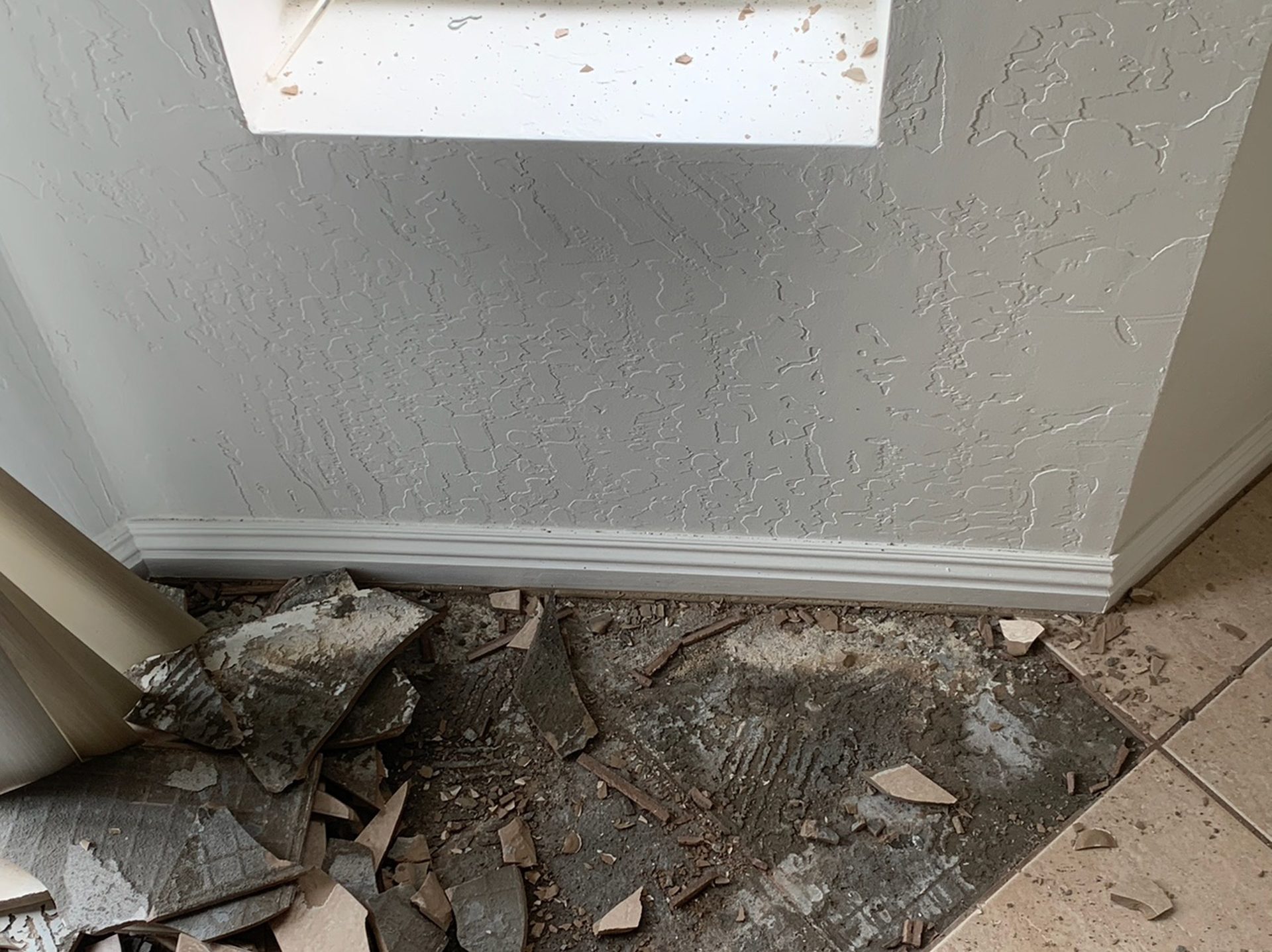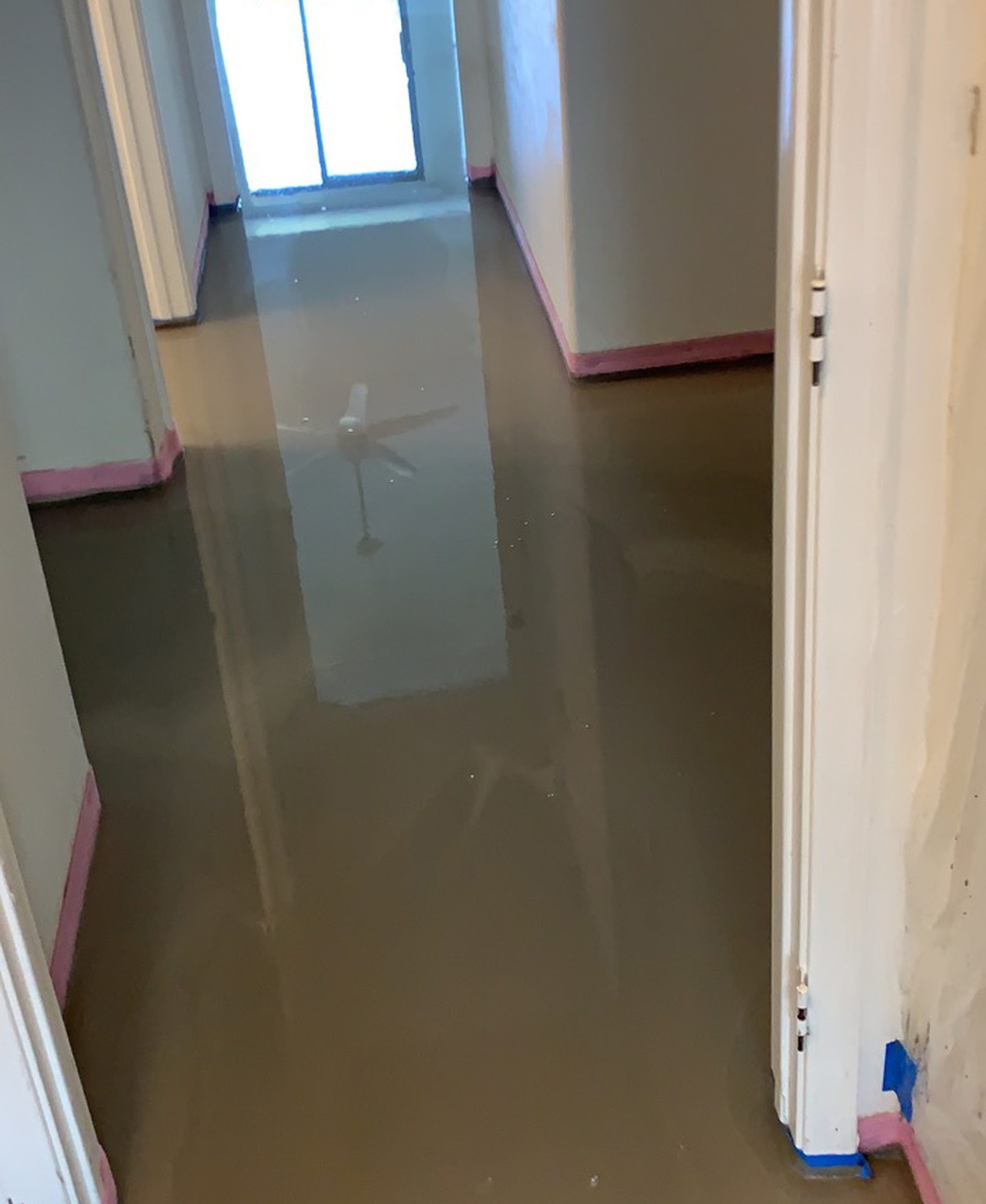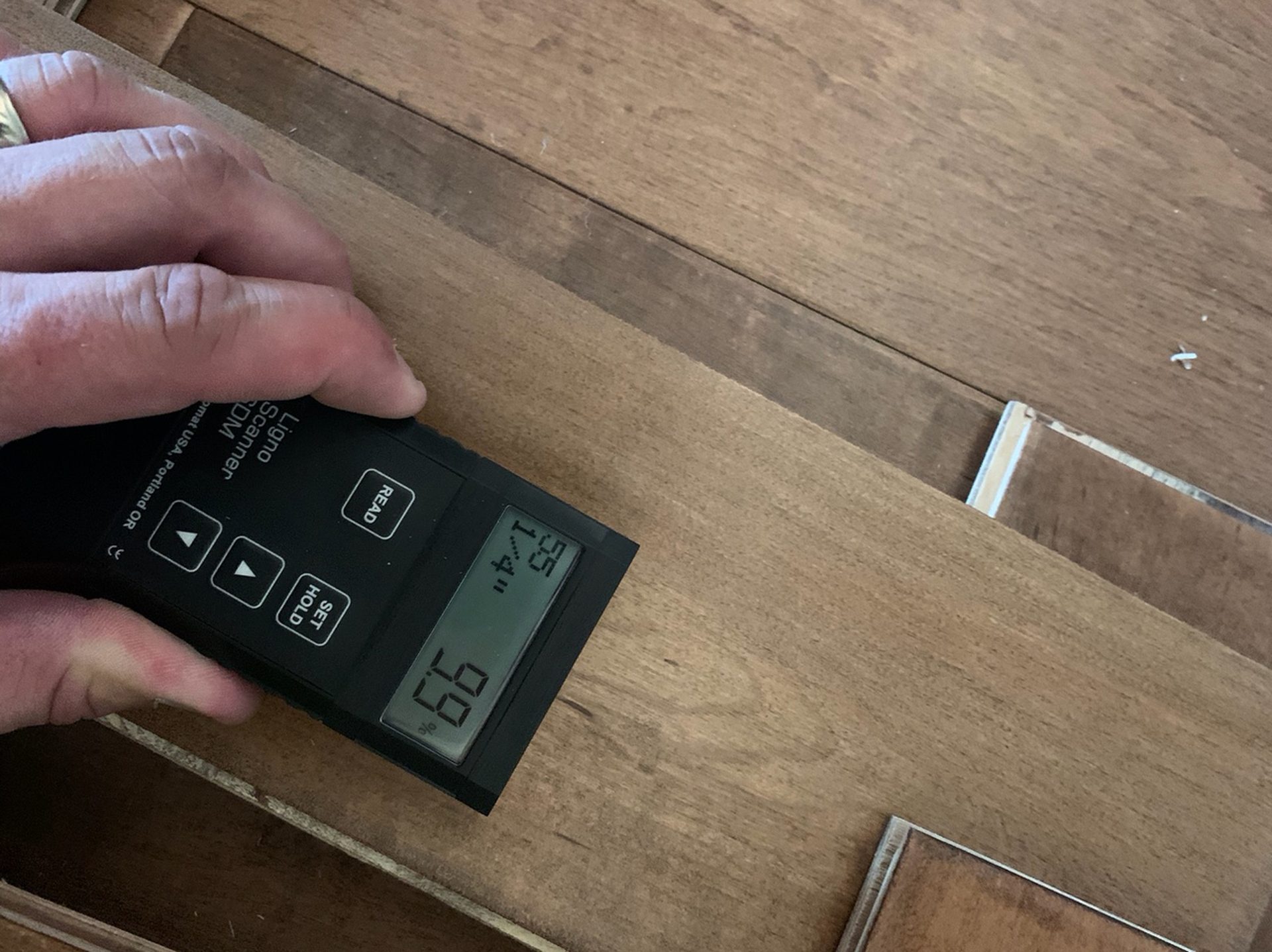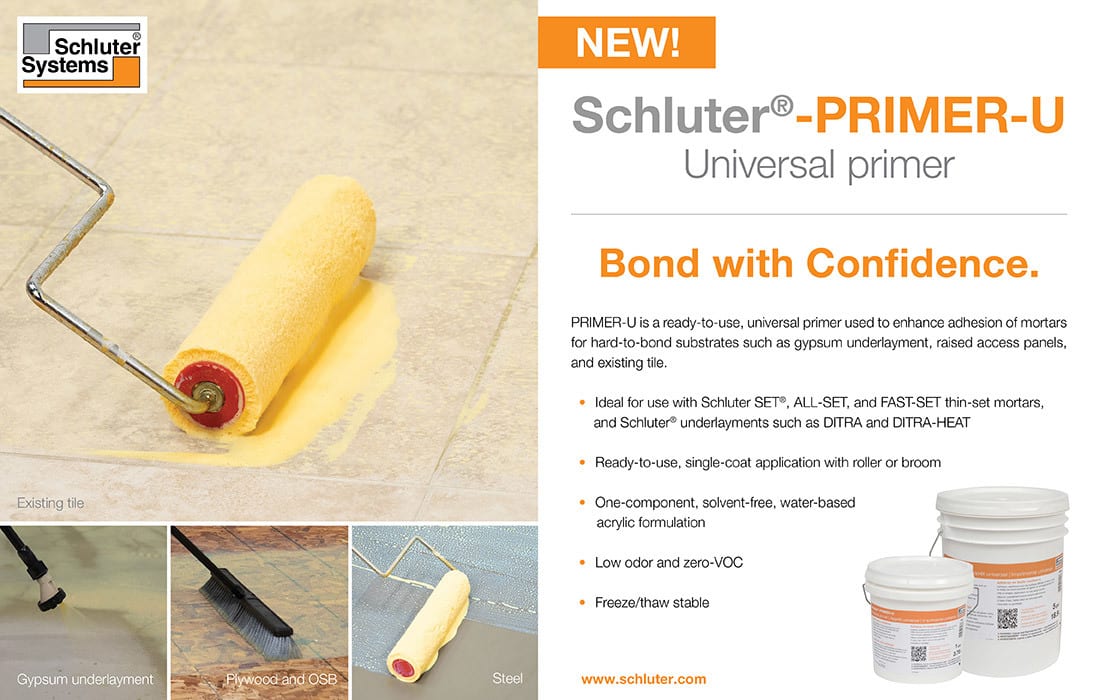Floor Academy Briefing
How to Build Value Through Education to Ensure Success
By: Kyle Hedin
// Knowing how to properly prep a subfloor has been a great value add for me. Photo: Kyle Hedin.

As a retail store owner, flooring installer and sales person, some of our least favorite questions are: Can you match this price? Do you offer a cash discount? Can you sharpen your own pencil? What these questions really mean is that your client isn’t understanding what you bring to the table versus the other bids they may have received. What are they actually objecting to? Is it the price, or is it because they don’t fully understand the value and knowledge you bring to the table to ensure that a project is successful?
There are many things I have started offering in order to differentiate myself from the other flooring installation businesses in my area. I’ve invested in dustless tile removal equipment; I use a sweeping compound before I sweep rooms so that less dust is created; I have learned how to properly prep floors; and one that is very often overlooked, I check the moisture levels of the products and subfloor.
When you can walk your client through the why and how of your process to demonstrate the difference between you and other flooring installers and how you can ensure that your install will be successful, you are building value. How many companies do you know that have sales people come in and measure everything and offer a price?
// Do you know how to properly prep a floor for self-leveling underlayment? Photo: Kyle Hedin.

My average consultation is an hour long, and I am looking for everything involved in the project. I make sure we pick out the baseboards, figure out what kind of transitions will be needed, how to successfully meet up to a different type of flooring, and how the furniture will be handled. I ask if this is a project that will require different stages, or can we have access to everything and just rip into it? I’ll walk them through my process of why I am starting somewhere and working out from there and how I will manage their expectations and keep their home clean and functioning. The same concepts are then listed in the project description so that they can clearly see that the higher cost is associated with the value I bring to the table.
As I said before, an often-overlooked area is moisture testing. In order to have good subfloor prep, we need to be doing the proper testing. How do you know if you can install the product if you don’t have all of the information? Just because the subfloor appears to be flat and dry does not mean it is.
I recently had two clients that had LVP installed directly over concrete, and both floors failed due to excessive moisture moving through the slab. One project was so bad that the water was pooling underneath the LVP. The RH in the concrete was 97%. Testing this concrete would have shown excessive moisture and the previous install company would have known to at least use a 6mil plastic, but this project needed more. Some grading needed to be performed outside and irrigation lines needed to be repaired. The slab needed to dry out. There were a few issues to be discovered, and they missed all of them because they did not know or care about proper flooring installation.
// Always test a concrete slab for excessive moisture prior to flooring installation and save yourself and the client time and money. Photo: Kyle Hedin.

By knowing the industry standards and keeping up on your products, you are building value through your knowledge for your clients and providing a wider range of offerings than other companies. Knowing that wood needs to acclimate longer, that tile should have expansion joints, or how to properly test and prep a floor can go a long way. Sure, it may cost your clients a little more upfront but having it done right is better than having it done twice. It will save you money. If the client doesn’t want to do the work, walk away. If they don’t understand the value you bring to the table, it isn’t worth it.
The minute the project is done improperly, your bank account puts the warranty on that project and waivers are just an admission of guilt in my opinion. Install the floor to industry standards or don’t do it at all. You don’t gain anything by doing it wrong. The value you gave to your client at that point has been completely lost.
Knowing how to properly prep a subfloor has been a great value add for me. Many companies don’t know how to do it right. They may use the wrong products; they may not know how to properly prep the floor for self-leveling underlayment; or they may not know how to mark out a room so that it is flat or level. Working with your local manufacturer reps is a great place to start. They are always more than happy to come out and help you do a job start. They can teach you about the proper products, how to properly apply them and how to install them.
Learning how to story stick a room and use leveling pins was a game changer for me. It has allowed me to map out entire homes and see if they are out by a 1/2” in general or an 1/8”. Knowing how much product is actually needed instead of guessing gets you to the number your client wants to know. Being able to explain why it needs to be done a certain way lets them know you are experienced and knowledgeable and that they can trust you. Having your rep onsite with you shows them you aren’t afraid of learning, participating in your industry and using your connections.
// How much value—and peace of mind—do you add by simply taking a moisture reading prior to installation? Photo: Kyle Hedin.

Where can you add little bits of knowledge and change some of your processes in your business to better serve your clients? Adding an air scrubber may cost you $0.05 per square foot long term, but what can you charge for it? Knowing how to make sure a floor is flat is invaluable. Knowing how to test a floor and make sure you are successful and protected long term is priceless. You should always be looking at your business to see how you can up your value to your clients to provide the best service possible. Sometimes you can offer a better service without even changing your pricing. I encourage all of you to truly examine what it is you bring to the table and find the best way to present it.
Each and every Wednesday you can learn more about topics like this as I interview successful businesses from around the country and world on how they are succeeding in the flooring industry. Look for the Floor Academy Podcast on your favorite streaming app.

With a degree in digital filmmaking and video production, Kyle Hedin is not a likely fit in the flooring industry. However, after evaluating his skillset in June of 2015, he decided flooring was a great option. With a passion for wood working as a teen, Kyle cold called 30 contractors in his area asking for a job as an apprentice. Two companies got back to him, and after a stint at both, he was out on his own by September 2017. While still very new and needing to learn, Hedin discovered an online community of installers on Facebook that helped him grow his hand skills. What he did notice was that not many of them understood the business side of things. In 2019 the Floor Academy Podcast was born to help craftsmen stop playing contractor and to become businessmen. Each episode is an interview with an expert in the flooring industry or their related field to provide insights into how to grow your business, save you time and put more money in your pocket.
About the Author >>

